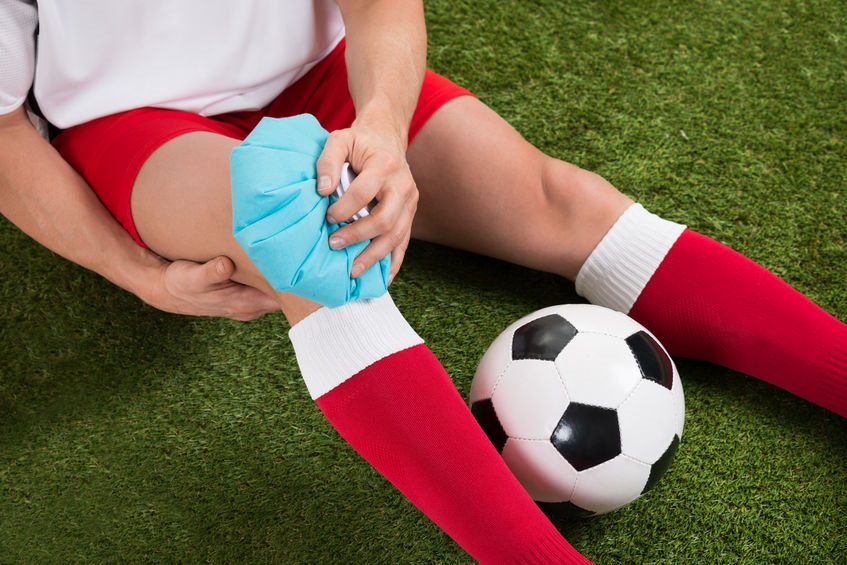
No matter how careful you are, it's hard to avoid injuries. If you work out or play sports regularly, you're susceptible to strains and sprains. Even if you're not the athletic type, it's easy to accidentally hurt yourself while going about your everyday activities, such as doing lawn work or making home repairs. Acute injuries are simply a fact of life, so it's important to know how to treat them when they occur.
Ice and heat are both commonly used to relieve pain, so some people treat them as interchangeable. But is this really the case? Actually, no. Ice and heat both have their uses, but when you're dealing with an acute injury, it's important to use ice and avoid heat.
Why? An acute injury - such as a sprained ankle - hurts because of inflammation. That's why the affected area becomes swollen and warm to the touch. Inflammation is the body's natural response to injury, and, to a certain extent, it's a good thing. Your body can't heal without it. But it's important not to increase your body's inflammation any more than necessary. This can make the pain and swelling worse.
Heat worsens inflammation in acute injuries by increasing blood flow to the affected area. Ice, on the other hand, does the opposite. It constricts blood vessels and helps to reduce swelling. The cold sensation of an ice pack also helps to relieve pain.
In general, if you find yourself dealing with an acute injury, you should follow the RICE protocol. RICE stands for:
- Rest. Stop doing the activity that caused your injury. Avoid putting weight on the injury, or you could make it worse.
- Ice. Apply an ice pack to the injured area. In a pinch, a bag of frozen peas wrapped in a clean kitchen towel will work.
- Compression. Add gentle pressure to the injury with a compression bandage or ace wrap. This will help minimize swelling.
- Elevation. Keep the injury elevated above heart level as much as possible. This will prevent swelling.
It's best to avoid using heat during the time your injury is healing. However, heat can be useful once the inflammation is gone. Sometimes injuries like strains and sprains can continue feeling stiff after the injury has actually healed. If this is the case for you, you can use a heating pad to increase blood flow to the area and relieve the stiffness.

